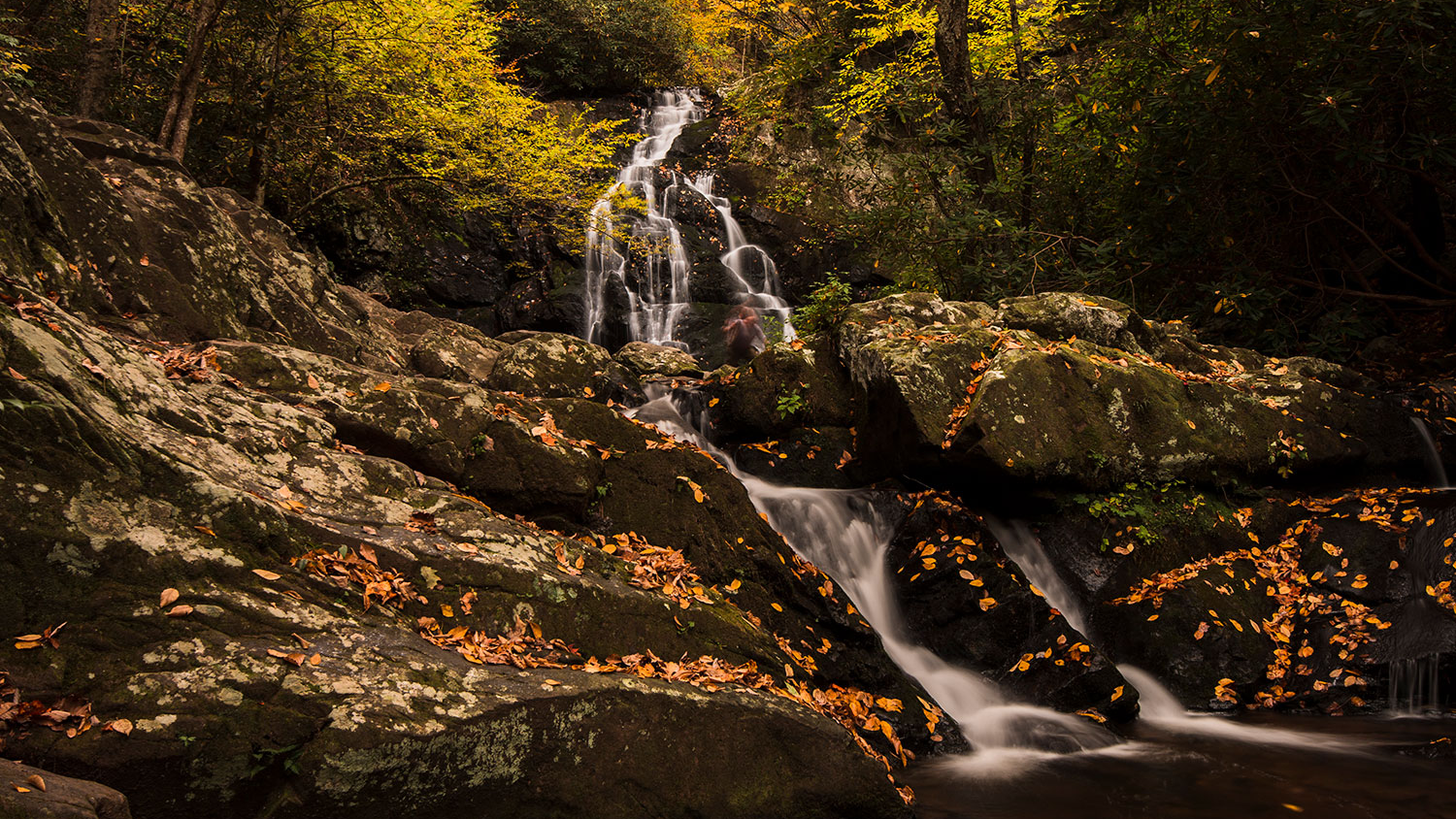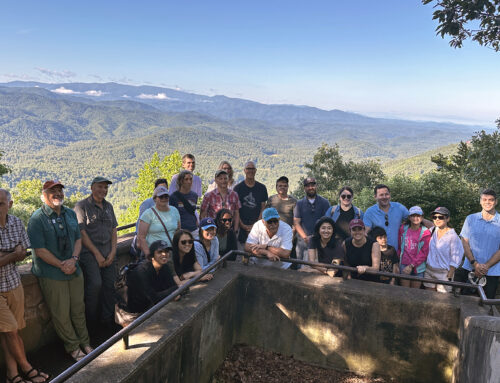This article was written by Erin Rosolina, Marketing Director at Tremont, and was initially published in the Fall 2025 issue of Blount County Quarterly. Read it in the original publication.
On certain mornings in late summer, you sense it before you see it. The air carries a new crispness, and the light slants differently across the ridges. In Great Smoky Mountains National Park, the transition into autumn is not a sudden event but a slow turning – a thousand subtle signals, some obvious and some almost invisible, all layering into the season we call fall.
Long before the famous reds and golds sweep across the hillsides, the forest is already at work preparing for winter. As days shorten, trees shift their energy inward. Sugars are drawn into roots for safekeeping, and tiny cells at the base of each leaf begin forming an abscission layer, a seal that will allow leaves to fall cleanly away. The colors that visitors marvel at in October are simply the visible finale of a process that has been unfolding quietly for weeks. Even as they shed, trees are sealing away the future: next spring’s leaves and flowers are already formed inside buds, wrapped in protective scales against cold and drought. At the same time, the chemistry inside living cells shifts, with sugars and other compounds acting like natural antifreeze. By the time a leaf drifts to the forest floor, much of spring is already tucked safely away.
Wildlife responds to these same signals with urgency. The forest’s bounty is brief, and the coming scarcity of winter shapes every choice. Black bears gorge themselves on whatever they can find. This may include acorns and hickory nuts when they are abundant, as well as soft mast such as persimmons and late-season berries. A single bear may consume up to 20,000 calories in a day, building the fat reserves that will sustain it through months of hibernation. Turkeys, by contrast, rely almost entirely on hard mast scattered across the forest floor. Unlike bears, which can shift to fruits, insects, or even carrion when nuts are scarce, turkeys are more directly tied to the fortunes of the oaks and hickories. In lean years, whole flocks may struggle, and hens enter spring in poorer condition, which can affect nesting success. Both species remind us that a year of abundance or scarcity in the trees reverberates far beyond the trees themselves.
Squirrels, too, race through the season, caching nuts across the forest floor in a flurry of half-remembered hiding places. They rarely recover them all. In their forgetfulness, they plant next spring’s oaks and hickories, playing an unwitting role in the renewal of the forest and in the survival of the animals that depend on it.
Beneath these rhythms lies another layer of life – one harder to see but no less vital. The leaves that fall in autumn are more than decoration; they are raw material for life. As fungi, bacteria, and invertebrates break them down, nutrients are returned to the soil. Salamanders, of which the Smokies harbor more species than anywhere else on Earth, thrive in this damp, leaf-filled world. Their health depends on the richness of the decomposed matter, linking the fate of amphibians to the quiet turning of the leaves.
Overhead, the sky carries its own stories of change. Broad-winged hawks gather in swirling groups (called kettles), circling higher and higher before riding thermals southward in streams that ribbon across the autumn sky. In the Smokies, this spectacle is especially visible in September at high ridges and lookouts like Clingmans Dome or Look Rock. Warblers and thrushes slip quietly through the canopy, pausing to refuel on berries before continuing journeys that may stretch to Central or South America. Even monarch butterflies, delicate yet determined, funnel through the Smokies on their improbable migration to Mexico. Each movement is part of a larger choreography – survival, preparation, and the unbroken continuity of ancient rhythms.
The cycles even extend into the air. As nights grow colder, cool, dense air slides into valleys and hollows, trapping moisture that condenses into fog. By morning, ridges rise through layers of mist, their slopes veiled in the blue-gray haze that inspired the name “Smoky Mountains.” This daily breathing of the mountains influences more than scenery – the shifting moisture nourishes fungi, mosses, and soils, the unseen foundation of the forest’s health.
What falls now will feed what rises later. Every acorn cached by a squirrel, every leaf broken down by soil organisms, every berry fueling a migrating bird is part of a web of dependence and response. Nothing in autumn stands alone.
For most of us, autumn is a season of looking. We drive to overlooks, snap photos of ridges set aflame, and marvel at the spectacle of color. But the Smokies offer a deeper invitation: to notice. To pause long enough to hear the slowing cadence of insects, to watch the nervous energy of chipmunks as they stuff their cheeks, to kneel beside the leaf litter and imagine the unseen work of microbes and salamanders beneath.
When we look closely, autumn becomes more than scenery. It becomes a reminder of the cycles we are part of, of endings that are never final but always folded into new beginnings. The quiet turning of the season is, in fact, a story of resilience and renewal.
And if you stand still long enough, you may just feel it: the whole mountain breathing in, preparing for the long exhale of winter, and already holding within it the seeds of spring.







